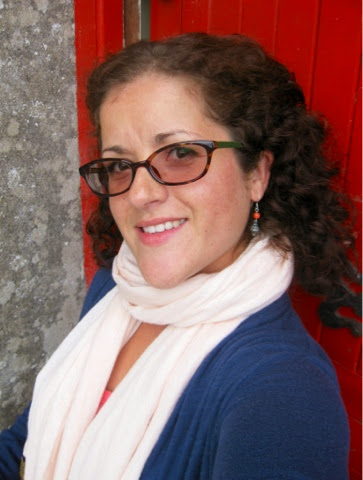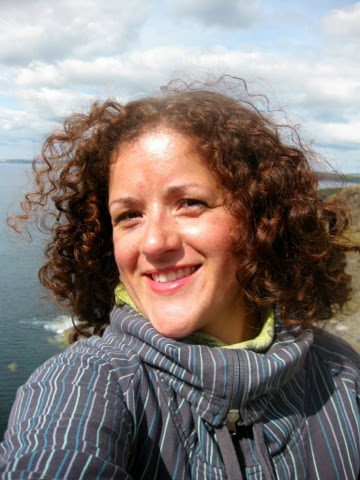To wrap up my time in Ireland, I went to Dublin for 3 days to meet two of my cousins I haven't seen in years, and to absorb some of the culture and history of this town that has seen Viking raids, plague, famine, nationalist uprisings, and a huge literary presence.
I left Limerick on Thursday via bus, but not without mishap. My cute Russian Doll suitcase (Heys brand) was apparently not up to the task of this trip. While I was rolling it along a smooth sidewalk, the telescopic handle unceremoniously snapped off. For those of you who know me, I'm a 5'1" lady with average strength. There's no way I could have Hulk-snapped that handle off. The case came with a 5 year warranty, and I'm currently dealing with Heys to have the cost of a new suitcase covered. I'm not super optimistic though as their customer service people weren't very helpful. Fingers crossed.
I was so grateful to my cousin Áine for meeting me in Dublin at the bus station. I was tired, hungry, and upset about my suitcase, and she got me fed, helped me call the luggage company, and then acted as Sherpa by rolling my broken case up the hill to the hostel. We spent the rest of the day wandering around Dublin and popping into sites that caught our fancy. Here's some of the hilights:
Above: Áine and I in front of the main gate at St. Stephen's Green, which is kind of like the Central Park of Dublin. If one is honoured with the key to the city, that person has the right to graze their sheep on the Green. When Bono (of U2 fame) received his key to the city, he went out and bought a sheep just so he could graze it on the lawns of the park. Don't believe me? Google it.
We popped into the Little Mesuem of Dublin (which has free entry on Thursdays) and I was overwhelmed by the exhibits. Two floors absolutely packed with items about Irish history, which is arranged chronically. When I say packed, I mean it - floor to ceiling/wall-to-wall photos, documents, snippets from the Irish Times, items of import etc. it was a bit overwhelming to take it all in, but definitely worth a visit. All of the items in the exhibits have been donated by members of the public, so it's a well-rounded museum, although not all items are catalogued with identifying info.
One thing that caught my eye in the museum was a bust of Bram Stoker (writer of Dracula). I had no idea that he was born in Dublin, nor that some of the inspiration for his novel came from scenes around the city.
Dublin is famous for writers - George Bernard Shaw, Oscar Wilde (who is probably the writer I enjoy quoting the most; I even bought a fridge magnet with this gem, "I can resist anything except temptation;") and of course, the notorious James Joyce, who has his own bronze statue on O'Connell Street. I think he looks a bit like a pimp, but you be the judge:
Speaking of O'Connell Street, it's named after Daniel O'Connell, also known as the Liberator of the Irish. He was responsible for Catholic emancipation in Ireland, as well as for founding Glasnevin Cemetery (more on that in a bit). An interesting personal connection, when I was 16, I dated the great-great-great-great-grandson of Daniel O'Connell (who also has the same name). The world is small, I tell ya.
Pub culture is an important aspect of Irish life, and Áine wanted to take me to "Probably the smallest pub in the World" - the Dawson Lounge (photo below). A funny thing, Áine actually forgot where the pub was, but given its tiny size, it's easy to miss.
Day two: I had plans to meet up with Áine's older sister, Aisling, around 4pm, so I had some time to explore Dublin on my own. The weather didn't cooperate though, and since the line for touring the Old Jamison Distillery was over an hour long, I decided to duck into Dublinia to get out of the downpour, and to educate myself about Viking influence in Ireland.
Vikings first came to Ireland in the late 700's CE. However, they didn't actually hang around until the 900's when they wintered in Dublin to avoid the treacherous sea journey back home. A Viking ship can reach Ireland in 7 days from Norway, and it's likely the raids were due to the fact that in Nordic culture, only the eldest son could inherit from his father. This left younger brothers without much to live on, and raiding enabled them to get access to goods and also slaves to gain wealth. Dublinia is a great exhibit, and at €8, it's good value for three large floors of interactive history. The end of the Viking rule came when the Normans, with the help of Stongbow (the Welsh knight), came to conquer Ireland. It was at this point in the 11th Century that the Norman-English got a toe-hold in Ireland, centred around Dublin, which lasted until the creation of the Republic in the 1920's.
Above: the Medaeval ages were a tough time in Ireland. These factoids about life expectancy are before the plague ever came to Ireland. Then it was really bleak.
The exhibit ends with a controversy and some bones. During the 1970's, the Dublin city council wanted to build new offices. They began digging and found Viking/Medaeval remains. The construction company wanted to go ahead with the build, but the people of Dublin took to the streets in protest over this blatant disregard of archeological importance. Eventually, a compromise was reached: archeologists had time to excavate the site and remove the remains, and the offices were built. One of the sets of bones found from the dig is on display. With DNA analysis, and artistic rendering, a bust of a Medaeval woman was created. It was amazing looking at a face that would've lived about 1,000 years ago. Fascinating stuff!
I met my cousin Aisling and we went to go see the Book of Kells on display at Trinity College.
Interesting story about Trinity College: it used to be a monastery. However, when King Henry VIII decided to reform the English church, he closed down monasteries, reclaimed their gold and stripped them of their lands. Hence trinity became a college.
The Book of Kells is a marvel of both typeface and illustration. Words fail to describe the intricacy of the interlocking Celtic designs scratched onto vellum. Vellum is made from calf's skin, and it's estimated that about 150 calves would have been required to source the vellum for the Book. The Book of Kells is actually four books, corresponding with the four gospels of Jesus' life. It's a wonder that the book survived given the burning of Catholic relics during both Hemry VIII and Cromwellian times.
After seeing the book, Aisling and I had some yummy dinner in Temple Bar before heading out to a pub to enjoy a few rounds. We ended up talking for hours with a very friendly father & son duo from Pennsilvania (hi Mike & Larry!) I got up and sang a few songs with the guitarist. It was a fun night.
Day three: after checking out of my hostel, I decided that for my last day in Dublin that I would visit both the Botanical Gardens (on the advice of the owner of Cafe Canajun - a Canadian inspired cafe) and the Glasnevin Cemetry and museum.
The Botanical Gardens are lovely. The greenhouses are some of the most beautiful I have ever seen. I got lost for about an hour an a half wandering around the grounds. I was amazed to see Arbutus trees (my favourite tree) here in Ireland. It felt like a piece of home was waiting for me to find it. People had easels set up for painting around the perimeter of the dahlia garden. Dahlias of all colours, so prettily arranged! The gardens are huge, I didn't have time to take them all in, however, I absolutely adored the live sculptures of green branches woven into lovely shapes. This is my favourite:
I was able to find the exit from the gardens into the Cemetry to join the last walking tour of the day.
Glasnevin is considered "the dead centre of Dublin" because there are more people buried in the Cemetry than are alive in Dublin today! I joined the walking tour and was privy to more Irish history - mainly focusing around the 1916 Easter Uprising and further civil war. The Republic of Ireland was bought with strife and tears and often saw brothers fighting against each other on opposite sides of the conflict. Those were bitter years.
Two main attractions that most people come to see - Daniel O'Connell's tomb (a huge 50 foot round tower), and the grave of Micael Collins, Irish rebel war hero. The details of these two men's lives and deaths are too numerous to write here, so I'll leave you with a few photos instead:
Above: the entrance into the O'Connell crypt.
Below: O'Connel's coffin. It's considered good luck to touch the wood of the coffin (which I did).
Above: the grave of Michael Collins is constantly covered in fresh followers - brought by admirers from around the world.
Below: Grave robbing used to be a big problem in the mid1800's as it was illegal to donate one's body to science, and so cadavers for medical students. Grave robbers devised a way of removing a corpse with minimal disturbance - they would dig just behind the headstone, straight down and cut open the coffin, then pull the corpse out by stringing a noose or using a hook to pull the corpse from its resting place, then pat down the earth behind the headstone. Grave robbers were so good at their jobs, the Cemetry staff don't actually know which bodies were taken. A fresh adult corpse could fetch you 2 months wages in Ireland, 8 months wages if you could smuggle the body to Scotland! Incentive indeed for times of wide-spread famine and poverty. However, the Cemetry folk wised-up and built seven imposing towers and a thick wall around the graveyard to prevent anyone from sneaking in to steal a corpse. The guards were told to shoot anyone not supposed to be inside the walls. Here's the ironic part though, if a guard successfully shot and killed a would-be grave robber, that guard could then seal the body and claim the money!
All in all, I packed in a lot on my three day trip in Dublin! Until next time, Ireland!

















































